The best gadgets and gear in 2020
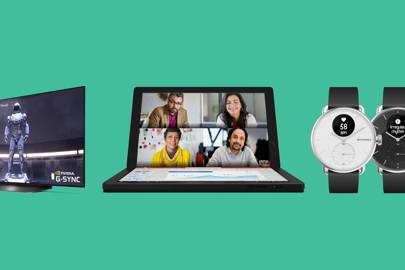
When faced with a tech expo the sheer size of CES 2020, we rely on a series of complex algorithms to determine the finest products on display, the future classics that will shape the year ahead. We don’t want to give away trade secrets but just for a flavour, inputs include evidence of innovation and design chops, risk analysis of vapourware threats, a narrow, points-based system to classify hardware whimsy and proof that the tech was built by and for everyday life forms. The output is this list.
Julia smart cooking system

Peels. Peels is the word that keeps CookingPal’s Julia smart processor from true greatness. Still, if you’re an extremely lazy or inept cook (or extremely both), this seeming marvel of a ‘smart cooking system’ weighs, chops, whisks, kneads, cooks, mixes and steams food. Oh, and did we mention that, if you’re capable of adding water and washing-up liquid, it washes itself, too? The accompanying smart display – with voice controls and a dial – suggests recipes and ingredients so all you really need to do is tap to order your shopping. And maybe peel a carrot.
Price: TBC | cookingpal.com
Suunto 7
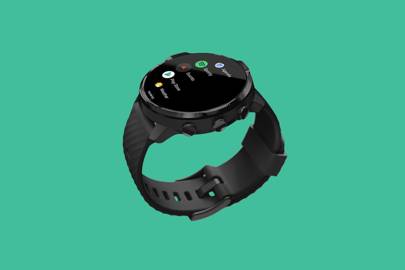
Battery life has never exactly been a strong suit of Wear OS watches, but Suunto’s first real sports smartwatch arrives with Qualcomm’s Sports Mode for its widely used Snapdragon 3100 chip. The result? A 48-hour battery life in regular use – damn impressive for Wear OS – and 12 hours of continuous GPS training. Sure, that looks ever so slightly puny next to the 120 hours you’ll get from a Suunto 9 in GPS mode, but because it’s a proper smartwatch you get Google Pay, Assistant and third-party apps alongside heart-rate tracking, 70 sports modes and offline maps. Up for pre-order now; shipping from January 31.
Price: £429 | suunto.com
Samsung Shoe Care System
We won’t lie, we coveted Samsung’s AirDresser, its “garment refreshing appliance” AKA a dry cleaners in a cupboard, pretty hard when it arrived in Europe in autumn 2019. But is the Shoe Dresser – or 'Shoe Care System' to give it its proper name – a step too far? Promising to deodorise and dry your shoes, there isn’t much detail on how this operates but it could be a lifesaver for the owners of malodorous feet or just a treat for luxury tootsies.
Price: TBC | samsung.com
Netatmo Smart Door Lock (and keys!)
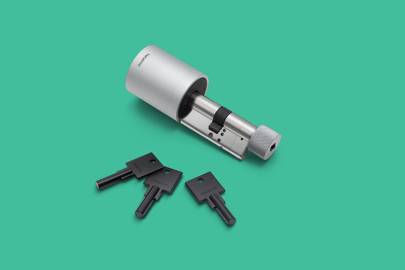
The fact that Netatmo is announcing a smart door lock that works with – wait for it – keys (!) isn’t as stupid as it seems on first glance. The NFC keys can be used for multiple doors across multiple properties (if you have multiple Smart Door Locks, that is) and can be deactivated if you lose them. Family members, cleaners and Airbnb guests can be issued with digital keys, accessed via a link and an app, in order to use their phone to get in, too. The whole thing is HomeKit compatible and fits over cylinder locks; it’s due to be released by the end of 2020.
Price: €350 | netatmo.com
Segway S-Pod
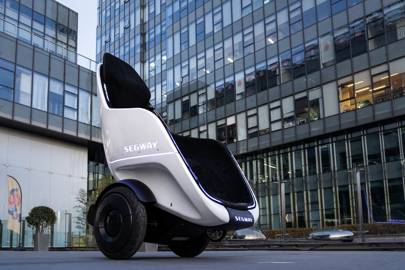
Segway’s new self-balancing motorised egg straight out of WALL-E has a top speed of 24 miles per hour. You sit in it, so no standing this time, and steer it using a joystick on the right side of the seat (rather than leaning in any direction). Being a two-wheeler, it still uses the familiar gyroscopic self-balancing tech as a traditional Segway, though. Having only a pair of wheels should also mean it will be manoeuvrable, too, but useless when it comes to stairs, especially as it weighs a hefty 150kg. It’s not on the company’s site at the moment, but expect this to be pitched at the campus, theme park, airport markets rather than your local shopping centre. Also don’t expect to see one in the wild any time soon.
Dell XPS 13 (2020)
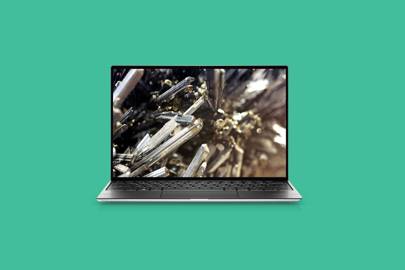
It’s with slight trepidation that we greet news that Dell has been tinkering with its XPS 13 series again. Why? Because it was essentially flawless to begin with, so much so that it hasn’t budged from the top spot in our best laptops list for months. The tweaks for 2019 include a new, taller 16:10 display that’s 25 per cent brighter and earns the ‘InfinityEdge’ name thanks to 0.5in bezels all the way round. The 2020 edition is slightly smaller in form, despite the bump from a 13.3in to 13.4in display – Full HD or 4K – and extras such as a larger trackpad. Inside, it’s 10th gen Intel Core processors, 8/16/32GB of RAM and up to 2TB of storage. Expect glowing reviews soon.
Price: £1,399 | dell.com
Smart, AI-powered kitty litter boxes (oh yes)
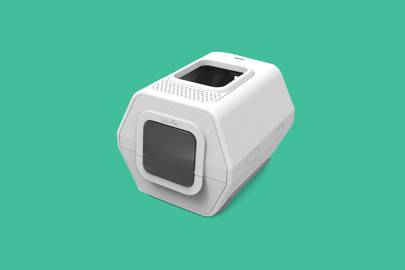
Unbelievably, not one but multiple connected cat lavs were revealed at CES this year. The Caremitou by NovandSat identifies, weighs and charts the temperature of your moggy as it enters, then you use an app to send the ph results of kitty's urine to your vet, along with the other data. Hilariously, the company boasts that all this tech is embedded in a litter box that doubles "as a decorative object at home". The front-runner, though, has to be LuluPet's smart litter box. You know how Gillian McKeith analyses human poop to tell you all about your health? Well, now your cat can have its do-do analysed. You heard that right, thanks to LuluPet’s ‘AI-powered’ litter box, once Tibbles does its business, the box’s built-in stool and urine image recognition AI will analyse it and send the data to an app for you to have a darn good look at. And if you have more than one cat, the litter box will know which cat’s poop is which. It even lets you know if Fluffy needs to lose weight.
Price: TBA | lulupet.com; caremitou.com
Keep Labs KEEP
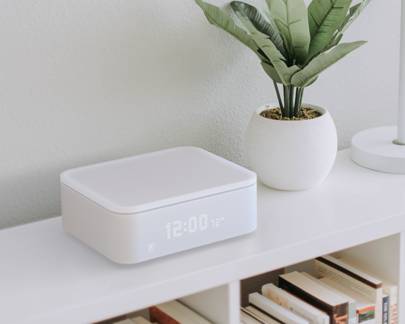
What would CES be without a bit of drama? After CES awarded KEEP, a cannabis company, with an innovation award, KEEP decided not to exhibit its wares at CES because um, it’s been banned from using the word cannabis anywhere on the show floor, which is the product’s entire MO. That’s right, KEEP is actually a discreet storage device designed to keep marijuana safe and contained. It uses biometric authentication, allowing the user to lock and unlock the KEEP device with a touch of your finger or a look with your eyes. It also resembles an innocuous smart speaker on the outside, so no one will be tampering with it. And even if they try to, you’ll be alerted straight away via the KEEP app.
Price: $199 | discoverkeep.com
LG and Sony’s 48-inch OLED TVs
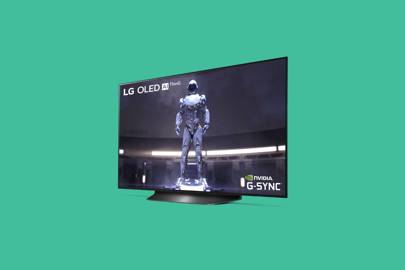
A new size might not be especially glamorous but it’ll sell: LG is bringing a 48-inch OLED to its TV line-up for the first time. That means the OLED48CX should be one of the most affordable ways to own a high-end, still-fairly-big 4K OLED telly in 2020, arriving with new features such as the UHD Alliance’s Filmmaker Mode which protects against too much picture processing. Oh, and did we mention that a day after LG’s announcement, Sony joined in with its own 48-inch OLED, the Master Series A9S? What we don’t have at this stage is actual pricing; perhaps LG and Sony are playing chicken.
Price: TBC | lg.com
Impossible Pork

Impossible Foods stole the tech roadshow last year with its Impossible Burger and the company’s got us all excited again with its plant-based pork! Yep, the world’s most-consumed meat has a plant-based alternative in the form of Impossible Pork, with ground pork and sausage varieties all on the menu. It’s made using haem, which is a molecule that’s derived from plants, and it kind of resembles blood, making this pork alternative feel even more real. According to the company, Impossible Pork contains roughly half the calories of actual sausage meat, with even less fat. The sausage will be used in 67 Burger King sandwiches across the pond next week.
Price: TBC | impossiblefoods.com
ForwardX Robotics Ovis suitcase
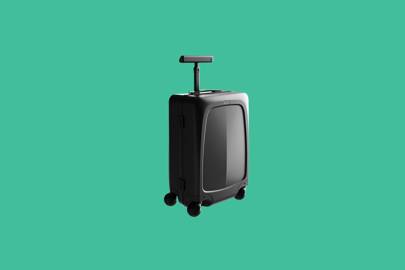
A few companies have tried to service the super-lazy travellers out there who cannot be bothered to manually steer a small piece of luggage. Remember Jeff Bezos playing with Piaggio's Gita suitcase? Well, ForwardX Robotics now has its own version, the Ovis. This 'autonomous' piece of luggage that self-navigates through airport terminals was shown last year but now it supposedly really is coming to market for the surprisingly reasonable sum of $800. It can follow you, run along side by side and even has obstacle avoidance thanks to its multiple on-board cameras. Feeling nostalgic and want to try pushing your own luggage? Simply grab the handle, which cuts all motor power for manual control.
Price: TBC | forwardx.com
Sublue Mix Pro
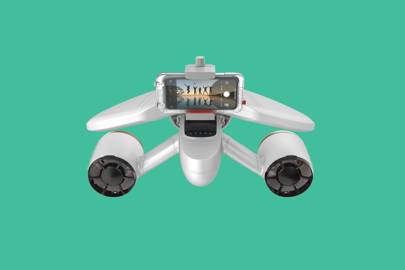
We're a fan of Sublue's water gear, so CES brought some good news in the form of their new Sublue Mix Pro (video here), supposedly the smallest double propeller underwater scooter in the market. Two drive options with a max speed of 1.8m/s, a buoyancy regulator (so it stays still in the water where it is left and not drag you down), a 60-minute use time and operation down to 40m in depth should see this being useful for both beginners and pro divers. You also get a waterproof phone case mount for capturing what must be obligatory social media footage of your subaqueous meanderings.
Price: TBC | subluemixpro.com
Withings ScanWatch
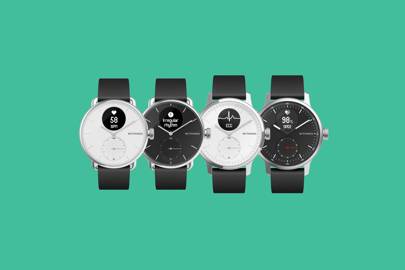
Proving Apple isn’t the only health tech player in smartwatches is the Withings ScanWatch, the latest iteration of the connected health company’s line of inoffensive, sensor-packed wearables. Cleared for sale in Europe but awaiting FDA approval in the US, the ScanWatch combines the usual smartwatch notifications, activity and sleep tracking on its tiny OLED display with proper health tracking in the form of an ECG (electrocardiogram) heart monitor and a blood oxygen sensor, which could track periods of low oxygen while sleeping and potentially even help to detect sleep apnea. Waterproof to 50m, available in 38mm and 42mm sizes and with a battery that lasts 30 days on one charge – Withings (formerly Nokia Health, even more formerly Withings) is getting a lot right here.
Price: £229/£279 | withings.com
Juno Chiller from Matrix
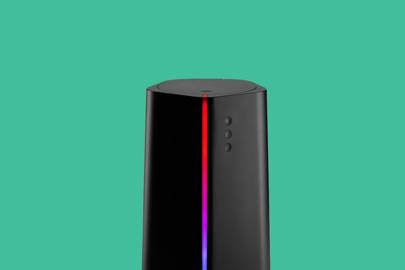
Hic! Showing itself to be at least a two-trick pony, Matrix Technologies has taken its thermoelectric tech, last seen charging the PowerWatch via body heat, and deployed it in an equally wonderful use case: booze coolin’! The Juno Chiller can chill a can of beer in two minutes or a regular 750ml bottle of wine in five. How? It uses what’s known as the Peltier effect, with a water bath inside the (admittedly quite large) machine, which once chilled itself, is spun rapidly around the bottle to draw out the heat. One for awkwards who can’t bear the minutes between guests arriving and vino flowing.
Price: £228 | indiegogo.com
Nanoleaf Unified Hexagons

Darwin’s favourite shape, a mathematically perfect form, the structure of carbon, bee hives and buildings and now the latest shape in Nanoleaf’s connected Light Panels. Behold, the mighty hexagon! Now the most mysterious of polygons can adorn your living room wall with these new modular smart lights, which look like they will be interoperable with other panel shapes in the future. Nanoleaf also brought its Screen Mirror feature to CES, with visuals and colours which react to on-screen games and movies, similar to what we’ve seen from Philips Hue. It’s also working on U-IQ technology that aims to learn the household’s habits and anticipate what lighting is needed. Also, hexagons.
Price: TBC | nanoleaf.me
Joué Play
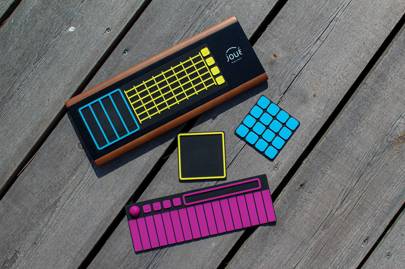
Whether you consider yourself Mozart or a skilful triangle-player, the Joué PLAY will have you jamming out and making sweet, sweet music in no time. The Joué Play is a modular MIDI instrument that plugs into your device for use with the accompanying app. It consists of a sleek wooden base, layered with four silicon pads. You can make a beat, add some bass and then top it off with a guitar solo riff at the end. Who needs real instruments anymore, when you’ve got one of these, which so happens to be extremely light and portable, too.
Price: €479 | play-joue.com
Lenovo ThinkPad X1 Fold

We’ve seen a lot of folding tablet and laptop concepts come out of this year’s CES but unsurprisingly no great rush of actual, foldable products. Lenovo’s ThinkPad X1 Fold is very real, so real it has a price – $2,499 in the US – and a vague release date of Q2 2020. The product itself is reminiscent of Microsoft’s nifty Surface Neo but with the major difference of using a folding 13.3-inch OLED display (built by LG) instead of two separate screens. A keyboard accessory can slide onto one 9.6-inch half when sat up like a laptop, fit snugly in the gap when closed or be used with the device itself propped up by the built-in kickstand. The catch? Just 8GB of RAM and no specifics on the Intel Core processor powering the thing. Still, promising.
Price: $2,499 | lenovo.com
Bosch 3D Display
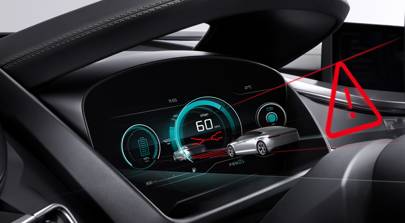
3D tech could be about to enter our cars. Bosch has unveiled a new 3D display that doesn’t need glasses to be experienced and supposedly helps drivers interpret information on their dashboard – like traffic data and the entertainment system – a whole lot faster than regular dashboard screens. So how does it work? Well, it uses passive 3D technology, an autostereoscopic process, several slanted lenses that go over a normal display causing the light to refract in different directions to give both the driver and passenger a 3D display, no matter where they’re sitting in the car. It’s pretty darn cool, but it’s not actually in any vehicles just yet. But who knows, maybe one day.
Panasonic Ultra-Compact HDR VR Goggles
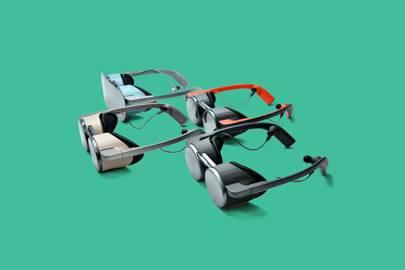
Your steampunk alternate reality has arrived. Don Panasonic’s VR goggles and forget the failures of Oculus, Magic Leap and co for good. We don’t know a whole lot about these VR glasses aside from the fact that they’re glasses and not a bulky headset. The goggles, built together with display maker Kopin, use OLED microdisplays in order to achieve the compact form factor. They’re also HDR-capable, which doesn’t shock us given Panasonic’s focus on picture quality in its TVs, with audio via built-in Technics earbuds. The big question marks are around the precise resolution, the field of view, the tracking sensors and how the goggles are powered. By the looks of the size of the device they will have to connect via cable or Bluetooth to a phone, PC or some other module – the release also mentions 5G.
Price: TBC | panasonic.com
SanDisk 8TB external SSD & 1TB Ultra Dual Drive Luxe
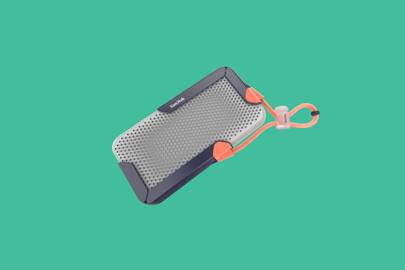
External storage is hardly sexy, even though SanDisk's designers are clearly giving their all here. But this new prototype is an 8TB external SSD with SuperSpeed USB transfer good for up to 20 Gbps. This happens to make it the biggest external SSD ever made yet the package is small enough to fit in a pocket, which means you can effortlessly cart around approximately 1,600 full-length films and eight million photos whilst out and about. Although only a prototype for now, it will likely lead to real product in the future. Speaking of a former SanDisk concept that in now commercially available, the company also unveiled at CES the 1TB SanDisk Ultra Dual Drive Luxe USB Type-C flash drive, which comes to market later this year. The addition of a USB-A port also means the $250 tiny key 1TB drive with a read performance of up to 150MB/s should be compatible with almost any type of computer.
Price: $250 (for 1TB Ultra Dual Drive Luxe)
source:wired.co.uk

Comments
Post a Comment